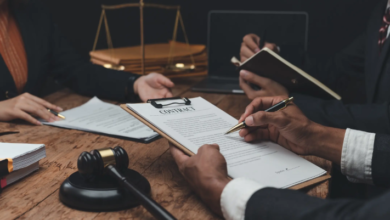What Types of Injuries Are Most Often Seen in Slip and Fall Lawsuits?

Slip and fall accidents are unfortunately common and can happen to anyone, anywhere, at any time. While some of these accidents result in minor injuries like bruises or scrapes, others can lead to severe injuries that have a significant impact on a person’s life. In legal terms, slip and fall cases fall under the category of personal injury law, where victims can seek compensation for their injuries and related expenses. Gaining knowledge about the common types of injuries associated with slip and fall cases can offer useful information about the seriousness of such incidents and their legal repercussions.
Head and Brain Injuries:
One of the major types of injuries resulting from slip and fall accidents are head and brain injuries. When a person falls and hits their head on a hard surface, it can lead to concussions, traumatic brain injuries (TBI), or other head injuries. These injuries can have long-term effects such as affecting cognitive abilities, memory, and even personality. In slip and fall lawsuits, head and brain injuries often result in substantial compensation claims due to the extensive medical treatment and ongoing care required.
Spinal Cord Injuries:
Slip and fall accidents can cause spinal cord injuries, ranging from herniated discs to paralysis. When the spinal cord is damaged, it can lead to severe pain, loss of sensation, and limited mobility. Victims often require extensive rehabilitation and, in some cases, lifelong assistance. Slip and fall lawsuits involving spinal cord injuries commonly seek compensation for medical bills, adaptive equipment, and the cost of long-term care.
Fractures and Broken Bones:
Fractures and broken bones are among the most common injuries in slip and fall cases. When a person falls, they may try to break their fall with outstretched hands, leading to wrist fractures. Hip fractures are a common occurrence among older adults, particularly those with osteoporosis. This can result in significant pain, temporary disability, and the need for surgical procedures and physical therapy. Slip and fall lawsuits involving fractures often demand compensation for medical expenses, rehabilitation, and lost wages due to the inability to work during the recovery period.
Soft Tissue Injuries:
Soft tissue injuries, such as sprains, strains, and ligament damage, are often underestimated but can be debilitating. These injuries can cause severe chronic pain and cause limited mobility, affecting a person’s ability to perform everyday tasks and work. Slip and fall victims with soft tissue injuries might require physical therapy, pain management, and time off work for recovery. In legal cases, compensation claims should cover medical costs, lost wages, as well as pain and suffering related to these injuries.
Slip and fall accidents can result in a wide range of injuries, from minor bruises to severe head and spinal injuries. Understanding the types of injuries commonly seen in slip and fall lawsuits highlights the importance of legal action in seeking compensation for victims. Whether it’s a head injury affecting cognitive functions, a spinal cord injury leading to paralysis, fractures requiring surgery, or soft tissue damage causing chronic pain, slip and fall victims deserve rightful compensation for their physical, emotional, and financial hardships. If you or a loved one has experienced a slip and fall accident, it is crucial to consult with an experienced personal injury attorney who can help navigate the legal complexities and fight for the compensation you deserve. Knowing your rights and seeking legal assistance can make a significant difference in your journey toward recovery and justice.




